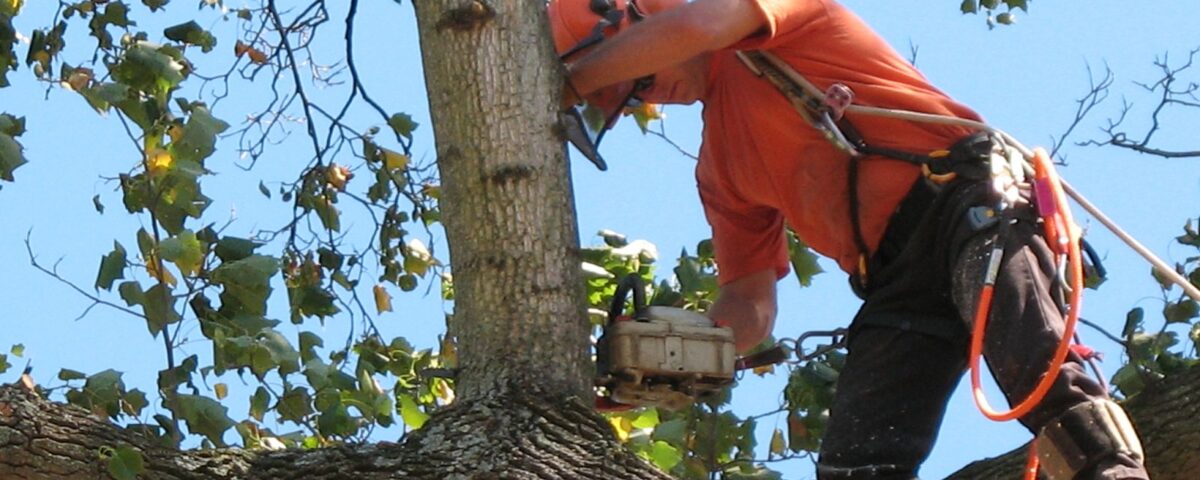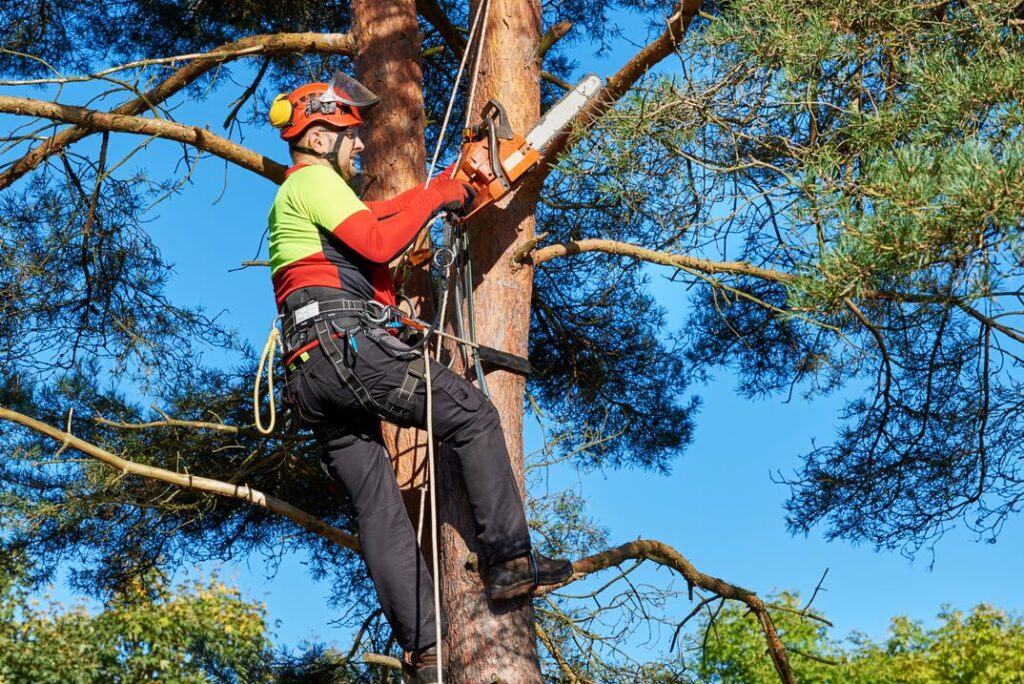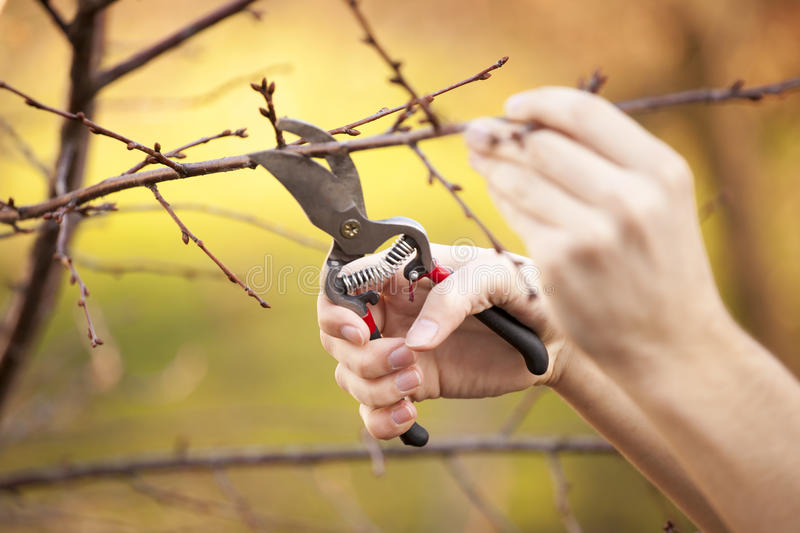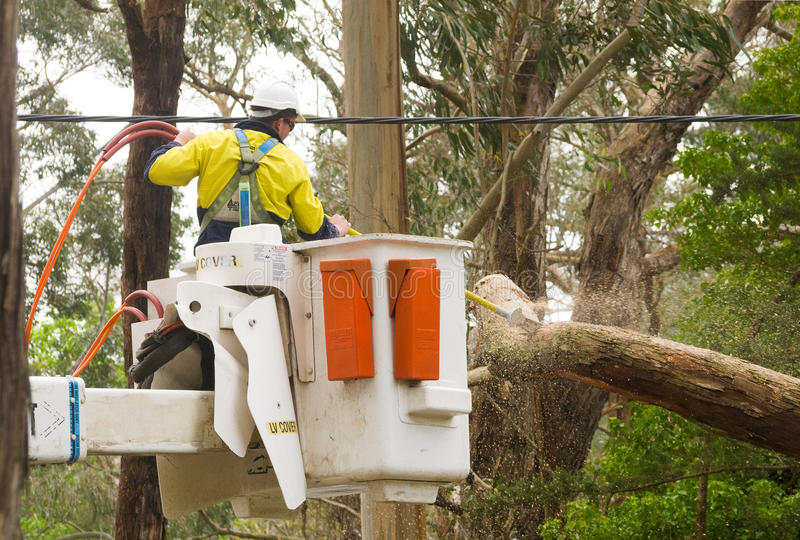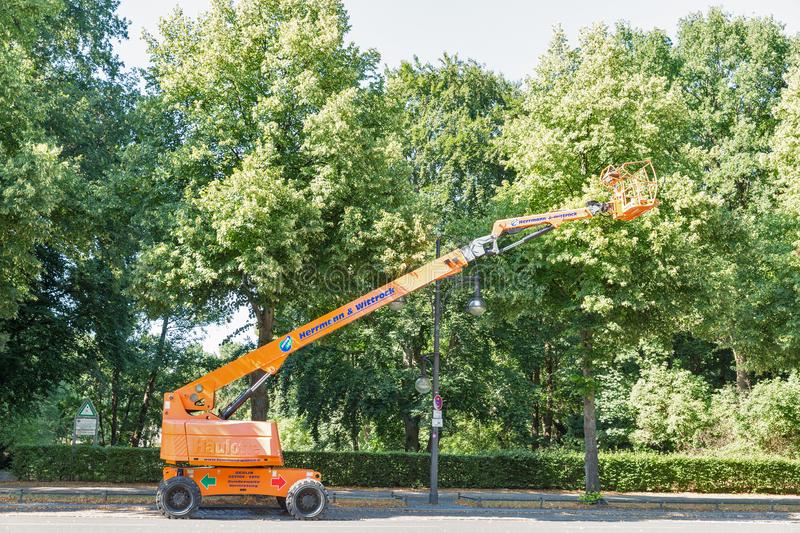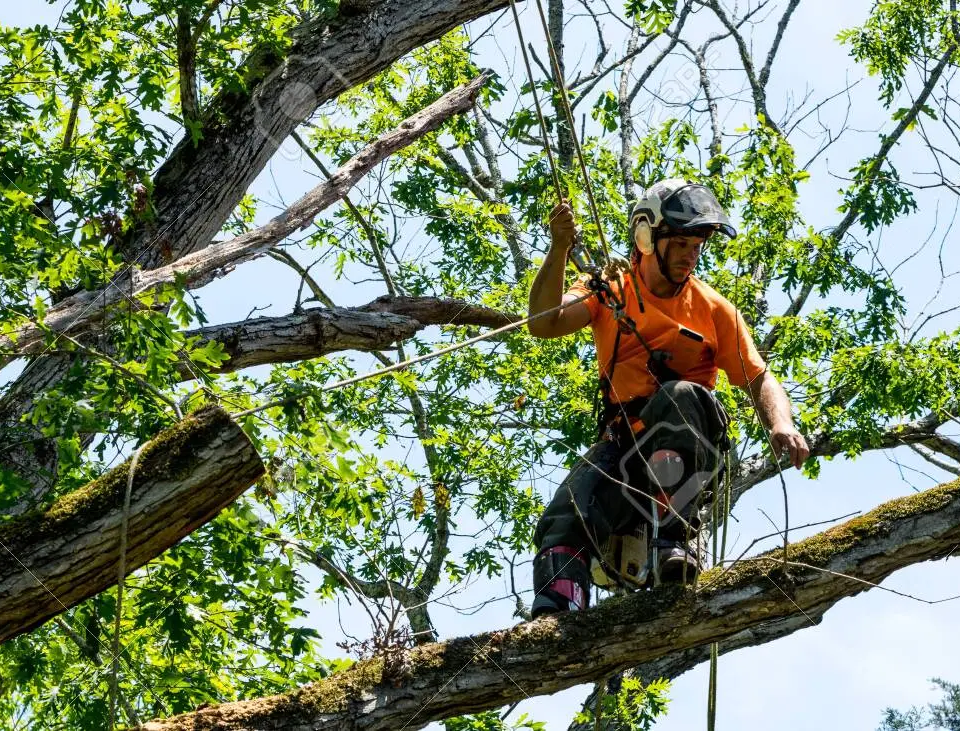Tree Trimming And Pruning: A Simple Guide

Tree Stump Grinding: Why Is It Important?
April 22, 2023
Tree Care Accidents: Your Right As A Homeowner
May 6, 2023Tree trimming and pruning are also important to the trees’ protection and appearance. These programs are not the same, but the words are also used interchangeably. So, you may ask, what is the distinction between trimming a tree and pruning a tree?
Tree Trimming
The tree trimming process is mostly based on aesthetics. To preserve a tree’s ideal form and appearance, we do this job.
Left alone, with branches growing in separate directions, trees can become unwieldy. Your trees can look scraggly, unbalanced, or misshapen due to this uneven growth. Overgrowth may also affect the tree and any adjoining plants’ wellbeing. Extra branches can impede the moisture, nutrients, and light they need to survive from having them.
Trimming often means thinning out overgrown branches, which helps to produce shapely growth.
Tree Pruning
Tree pruning also aims to increase the form and appearance of a tree, but the job is based mainly on its potential health.
Pruning helps protect and encourage strong growth against pests and diseases. It mainly includes the clearance of dead, diseased, and loose branches that hinder the flourishing of the trees. We also remove any growth, such as branches that cross over each other, that interferes with other sections of the plant.
For proper tree pruning, arborists have the training and experience required. Determining which limbs can be cut to obtain healthy trees can be challenging or impossible for an untrained person.
Proper pruning can improve flower development and maximize the yield of fruit. If this job is done improperly, however, the growth of the plant will be stunted. Excess pruning will, in some situations, promote pests and disease or even contribute to the plant’s death.
How Often Should We Trim And Prune Trees?
How often you need to trim depends largely on appearance and personal desire. They probably need a trim if the trees look too big or uncomfortable. Usually, trimming is performed only once or twice a year.
Pruning is performed strategically, at particular times of the year, but the precise timing depends on the types of plants. Towards the middle of summer, spring-flowering trees are typically pruned during the flowering season. During the winter or spring, pruning is usually performed for summer-flowering and fruit trees.
Are you interested in learning anything about trimming and pruning? These activities will conveniently be done for you by a skilled arborist.
Importance Of Trimming And Pruning
For various purposes, tree branches are pruned, both of which result in a better looking and better-performing tree. While trees do grow without pruning very naturally, this regular care of the landscape helps the trees to achieve their maximum capacity and live a long life. Although you need to know that you can trim a tree before you can learn how to trim a tree properly.
Plant health pruning focuses on the elimination of dead, decaying, and diseased leaves, rubbing branches and any branch stubs so that the whole tree continues to grow more healthily. Opening up the canopy to allow the entire tree to filter light and air allows for increased vegetation thus reducing the possibility of illness. Suckers and water sprouts kill wood at ground level and extract nutrients from the main tree. You build a healthy tree that is eventually capable of withstanding winter storms and high winds by helping a tree develop one main tree and a dominant chief.
Maintenance of landscape and pruning of beauty merge to create the perfect plant you imagine. You may promote fruiting and flowering, turn plants into specific shapes and regulate plant size by pruning and trimming trees in specific ways.
Health considerations are not always taken into consideration, but they are always a legitimate excuse to prune the trees. For your family and friends, trimming the trees in your yard provides a healthy atmosphere. Well-pruned trees are better and heavier. For people and land, dead roots, diseased trees, and weak limbs are all a threat. Take a minute to determine whether tree limbs get too close to safety signals, electric poles, or block road views while pruning trees.
It is also important for pruning trees to trim out branches and dead limbs before hurricane seasons, depending on where you live. Too much vegetation can cause trees to be top-heavy and in storms to fall over easier, and dropping branches can damage a house or plants below.
Benefits Of Trimming And Pruning
- Regulation of Pests & Insects. Pests and insects are best handled, and it’s one of the first advantages of pruning and trimming outdoor trees and shrubs. There could be significant problems if the insects on your property are not monitored. Tent worms colonize insects that build nests in your trees and consume the vegetation that surrounds them. Although insects do not destroy the plant, they may transmit diseases, weaken the plant and increase the risk of branches dropping. The insects will find their way to your home or invite other unwelcome bugs to nest inside if the plants are too close to your home.
- Conservation. The wellbeing of your land is a more apparent advantage of plant maintenance. A big danger to your home is caused by dead and diseased trees. Your family is therefore vulnerable to the danger the branches will collapse. You will ensure that your property is healthy by properly pruning your plants, particularly trees. The side of your house will even be harmed by branches from harsh winds scraping against it. Even, vines and climbing plants should be periodically cut. Depending on how near they are placed to the siding of your house, they will expand under the siding and take it away from the foundation of your home.
- Growth and Development. Plants need proper care for adequate growth, just as you do. The pruning and trimming of shrubbery increase a plant’s health and strength. The plant would profit the most in the long run from structurally pruning a young plant. If the plant matures and is more likely to have a healthier formation, it may need less corrective pruning. The plant will weaken and not have the ability to sustain the whole plant if there is a reduction of form.
A problem that should have been prevented is the last thing everyone has to deal with. The outside of your home will reap the most benefits by constantly pruning and trimming trees and shrubs as desired. Throughout the year, both plants need specific treatment at different periods. It is incredibly important to actively monitor the landscape of your home so that you can take any appropriate steps if required.
A Correct Way To Prune A Branch From A Tree
Bear in mind that the cuts are going to promote new growth while thinning, reducing, and forming branches and limbs small enough to cut with hand tools. Cut limbs 1⁄4 inch above a bud that faces the plant’s outside. The course of the new growth will be this. To avoid water damage and illness, keep the wounds at a 45-degree angle.
Pruning Huge Tree Branches
A callus is created by correctly pruned tree branches where the missing branch once stood. This callus is important to the tree’s wellbeing. To minimize damage to the bark, most tree branches that are trimmed back to the trunk or the main branch may need three cuts. The first two cuts eliminate the weight from the branch of the tree and the third cut is planned for the optimum growth of the callus.
Phase One: Go Up 18 Inches To The Underside Of The Branch You Are Cutting.
For your first cut, this is the ideal spot. Split up to the branch nearly halfway.
Phase Two: Switch To The Branch’s Upper Side.
From your first cut, pick a position an inch farther away. Cut down gently until the branch breaks loose.
Phase Three: Locate The Trunk’s Branch Neck.
It is the stem tissue that is at the branch’s base. You’ll see a little swelling in most trees and rougher bark in this area. Only on the outside of this collar, you want to make the final cut, but without leaving a stub. Create a complete cut with a kick out of the base of the tree at a 45-degree angle. This avoids disruption to the water and facilitates the accelerated development of the callus.
Tree Trimming And Pruning Tips
Tree pruning can sound like a major job, and it can be. We suggest you leave it to trained arborists and tree care practitioners for the big, existing shade trees. To cut broad branches safely, they have the necessary equipment and preparation. The best way to start learning how to prune a tree is to have ornamental and fruit trees. Most are easily accessible and need easy resources.
Start Early On Trimming And Pruning Trees
As soon as a tree is planted, a proactive homeowner starts pruning. It is important to remove diseased, dead, and damaged branches right away. Before the first winter after planting, pruning for the form is not appropriate. Throughout a tree’s life, daily pruning decreases the amount of maintenance required and the burden on the tree. From the very beginning, pruning a tree a little each year produces a powerful and beautiful tree.
What Is The Perfect Time To Prune Trees?
There is never a bad time for dying, weakened or diseased branches to be removed. But most trees in mid to late winter benefit from pruning. As soon as the weather starts to warm, pruning during dormancy promotes new growth. During fall, the absence of leaves helps you to quickly distinguish trees and limbs that need removal.
Be mindful that when pruned during late winter, certain trees will bleed sap. In winter, for instance, pruning maple trees is desirable, but it can lead to bleeding. Don’t worry, as soon as the tree starts bringing on leaves, the sap will stop dripping. It’s not dangerous, and your tree won’t be harmful to us.
While we like to make a pruning plan in the fall, we still wait a couple of months before we start pruning. Pruning trees can cause disease in the fall. It may also promote fresh development in the event of a warm fall, which would be destroyed as temperatures fall.
In summer, pruning trees is not a common choice, but if done with care, it may often be helpful. Summer pruning is used by professional gardeners to guide growth by slowing down the growing of a tree or branch. Only after the seasonal growth has reached its height, the best timing for this method of pruning is. You reduce the number of nutrients sent to the roots and the overall growth of the tree by removing the overall leaf surface of the plant.
Now that we’ve identified when pruning trees is the best time of the year, let’s talk about flowering trees. They don’t follow the rules precisely. Flowering plants fall into two categories: early and late bloomers, respectively.
Early Bloomers
Early blooming trees set buds for the growth of last year. For instance, growth from 2017 is blooming on a tree blooming early in 2018. Your tree won’t flower if you prune during the winter. Instead, prune after the tree stops flowering right away.
Late Bloomers
Trees that flower in late spring to early summer set buds on the new growth this year. For instance, growth from 2018 is blooming on a tree blooming in June of 2018.
Methods
Both the health and the shape of a tree can be enhanced in several respects. The aim of each is to build a tree with good circulation of light and air, desirable characteristics, and intensity. Crown thinning, crown raising, crown reduction, and crown cleaning are the four most common tree pruning techniques for general pruning. You will note that the crown of the tree is included in each process of pruning. That’s because the tree’s crown is necessary for photosynthesis to produce leaves. Over time, the remainder of the tree would weaken without a solid and stable crown.
Crown Thinning
To minimize the average density of a tree, thinning the crown requires trimming a tree to eliminate individual living branches. The most common pruning carried out on mature trees is thinning. It increases the penetration of sunshine and air circulation. It may also decrease tension from gravity, wind, ice, or snow on selected limbs.
Since the aim is not to adjust the tree’s size or form, thinning should be consistent across the tree. From the edge of the canopy, you can only cut 10 to 20 percent of the tree branches.
Reducing The Crown
Crown reduction is a procedure of tree pruning commonly used on smaller, more mature trees. It will help stabilize the tree and foster new growth. A tree branch is separated back to a rising lateral branch by Crown reduction. This lateral branch will become part of the new tree crown as the growing season starts in spring. We think this solution is a gentler alternative to tree topping. There are smaller cuts, less of the crown is eliminated and the foundation is left with plenty of old growth. While crown thinning is carried out to minimize branches and leaves, the purpose of crown reduction is to eradicate old growth while fostering new growth.
Cleaning The Crown
When trimming a flower, crown cleaning is the elimination of dead, diseased, and damaged limbs. It can be carried out at any time and can be used as part of the thinning, elevation, and reduction of the crown. Cleaning the crown of the tree improves the entire tree and avoids potential harm to both the tree and the surrounding property while enhancing your landscape’s overall protection.
Proper Tools On Tree Trimming And Pruning
When trimming a flower, crown cleaning is the elimination of dead, diseased, and damaged limbs. It can be carried out at any time and can be used as part of the thinning, elevation, and reduction of the crown. Cleaning the crown of the tree improves the entire tree and avoids potential harm to both the tree and the surrounding property while enhancing your landscape’s overall protection.
- With ergonomic handles and proprietary gear technology, the PowerGear® Pruner offers up to three times more power to remove stems and branches up to 3⁄4″ wide.
- PowerGear® Lopper for expanded reach and balanced power for cutting up to 2″ in diameter from the middle divisions, where you need the most leverage.
- The innovative teeth concept easily and effortlessly slices through the wood to extract large limbs and branches with simple, fast cuts. The Power Tooth® Softgrip® Saw is suitable.
- A special low-friction coating helps you to quickly cut branches as thick as 1 1/4 inch to meet branches up to 16 feet apart. Extendable Pole Saw and Pruner® is recommended.
Conclusion
Two processes homeowners perform while taking care of their gardens are pruning and trimming. Trimming typically refers to the care of small shrubs or hedges, while for trees and shrubs, horticulturists use pruning. Both words for horticulture are used interchangeably, but they use varying types of equipment and have different installation periods. Healthy and aesthetically pleasing trees, shrubs, and hedges are the end product of trimming and pruning.

